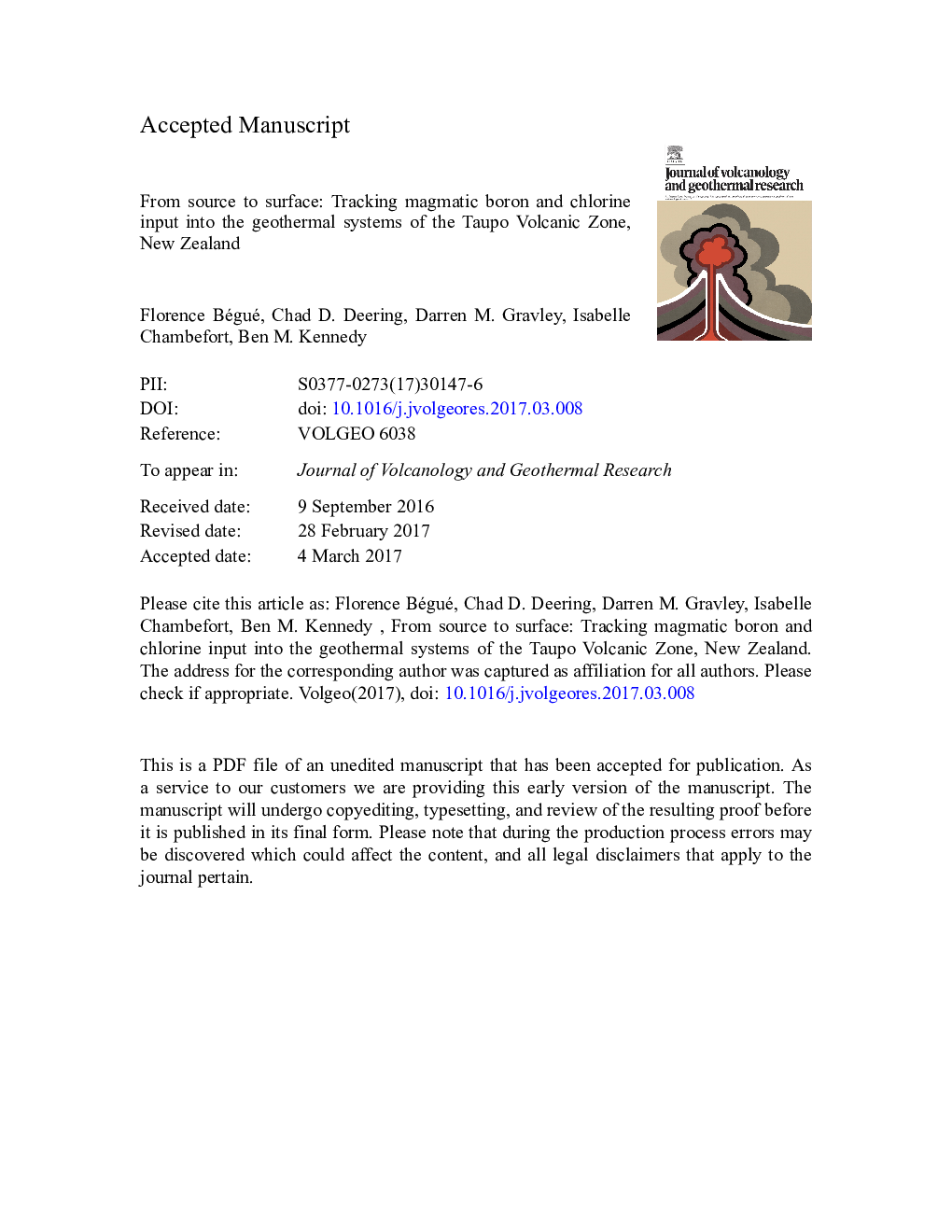| Article ID | Journal | Published Year | Pages | File Type |
|---|---|---|---|---|
| 8911486 | Journal of Volcanology and Geothermal Research | 2017 | 39 Pages |
Abstract
Here, we use volatile concentrations (i.e. H2O, Cl, B) from rhyolitic and andesitic mineral-hosted melt inclusions to evaluate the magmatic contribution to the TVZ geothermal systems. The andesite and two different types of rhyolites (R1 and R2) are each distinct in Cl/H2O and B/Cl, which will affect volatile solubility and phase separation (vapor vs. hydrosaline liquid) of the exsolved volatile phase. Ultimately, these key differences in the magmatic volatile constituents will play a significant role in governing the concentration of Cl discharged into geothermal systems. We estimate bulk fluid compositions (B and Cl) in equilibrium with the different melt types to show the potential contribution of 'parent' fluids to the geothermal systems throughout the TVZ. The results of this analysis show that the variability in fluid compositions partly reflects degassing from previously unaccounted for distinct magma source compositions. We suggest the geothermal systems that appear to have an 'arc-type' andesitic fluid contribution are actually derived from a rhyolite melt in equilibrium with a highly crystalline andesite magma. This model is in better agreement with the current understanding of magma petrogenesis in the central TVZ and its atypical rifted-arc tectonic setting, and show that the central TVZ records an arc, not back-arc, fluid signature.
Related Topics
Physical Sciences and Engineering
Earth and Planetary Sciences
Geochemistry and Petrology
Authors
Florence Bégué, Chad D. Deering, Darren M. Gravley, Isabelle Chambefort, Ben M. Kennedy,
